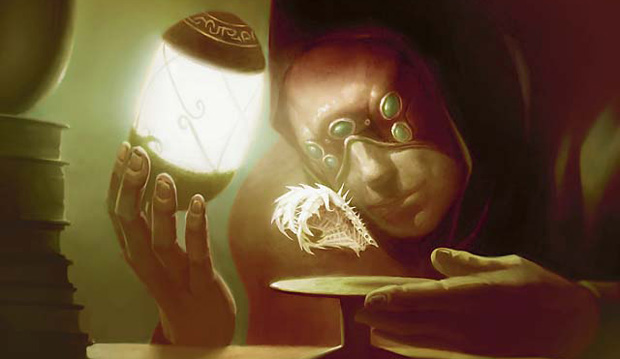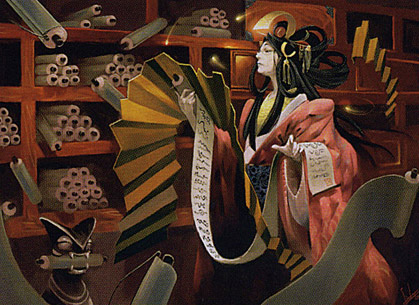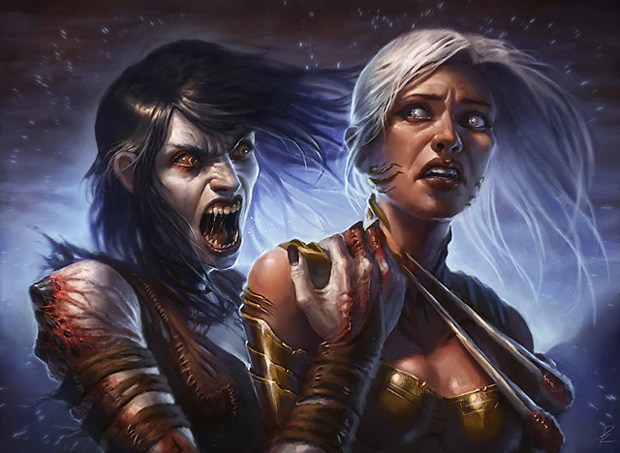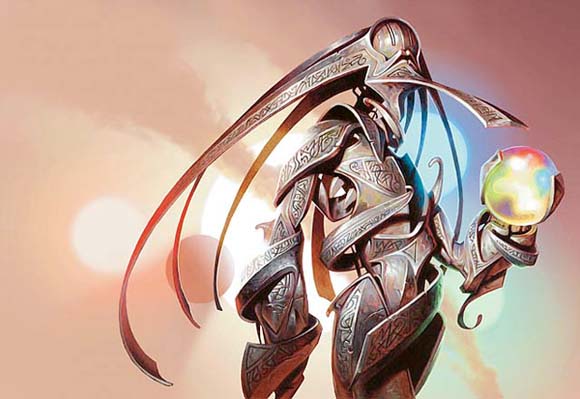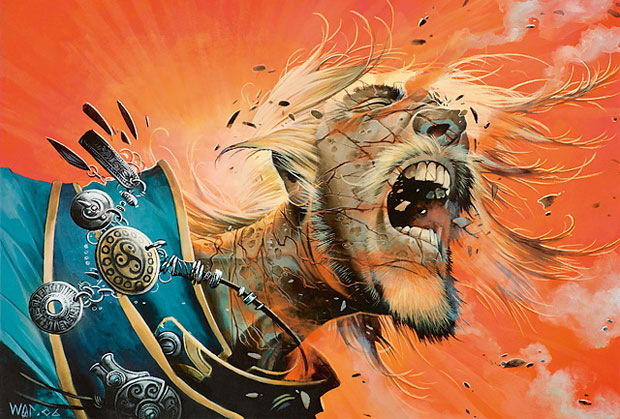This flashback post was originally published on redsitewins.wordpress.com. Note: some links and images may be outdated or broken.
A Warrior and a Wizard walk into a bar. They're here to recruit; and, apparently, this is the best place to do it. They have enough coin for two more members to be added to their party to embark with on their upcoming adventure. However, the pair were faced with a problem.
The problem wasn't that there weren't enough eligible persons from among the rowdy crowd; it's choosing which two would-be teammates where the difficulty lies. Do they pick up the reliable Soldier? They've already got a melee type. How about the Cleric? Always good to have some wounds cured. That Rogue in the corner might have a special set of skills the party could use. How about the Ranger? The Monk? What about that guy entertaining the wenches, the Bard? And, still, there's more possibilities, but who do they choose? Today, we'll explore what that answer will be.
Welcome to another installment of a collaborative Magic: The Gathering set design column! Today, we're going to discuss more in detail regarding one of the four-color factions in the set, the nonblack faction. Specifically, the classes to go along with the faction's identity: the classic adventuring party found in video game and tabletop RPGs. Let's dive in!
Last time, I pondered what direction we should go with the nonblack faction. One of the major choices was going with a mechanic that cared about basic permanents and introducing nonland basic cards. Since then, given the mostly positive feedback on another direction, the adventuring party, I've decided to go with that one. It's a more simple impact on the set's overall complexity than would be introducing a new type of venture with basic nonland cards. Really, that's what we would want when we're talking about one of FIVE factions.
So, first things first. What exactly are we talking about with an adventuring party? What do we want to experience in playing this faction that represents that? Since this is supposed to be the faction that shuns black and all that entails (parasitism, the self over the group), I was thinking of the Dungeons & Dragons and Final Fantasy I team of usually four all having their roles for working together as a team. Each person (creature) would play an instrumental part in their adventure. A warrior is good at melee combat while a wizard excels in terms of spellslinging. How do we represent that on a card?
It started out with a design that had a creature card care about whether you had another creature around with the creature type specified on the card.
"CARDNAME has flying as long as your control a Wizard."
However, as Jay Treat pointed out, this seems to be backwards. Instead of having a creature gain abilities if another creature you control has the appropriate creature type, just make it so that the creature flavorfully associated with the ability grant that instead of the other way around. Here's an example.
"Warriors you control have flying."
But, then I thought, "Wait. A Wizard granting flying doesn't fly himself/herself?" I suppose it can be flavorfully represented as a Wizard only having enough power to either focus on himself/herself or focus on a specific class type. Or... it could just have the ability itself as well:
"Flying
Warriors you control have flying."
Wait, scratch that.
"CARDNAME and Warriors you control have flying." OR
"CARDNAME and CLASS-TYPE you control have (ABILITY or +POWER/+TOUGHNESS)"
O.K. So, now that we have our template, it's time to figure out a few things:
1) What abilities and power/toughness boosting will appear on the common and/or uncommon creatures?
2) What classes are we using?
3) How are we going to decide on what creatures will grant what bonuses to which class type?
First off, I looked at how there are going to be four class types to care about in this adventuring party. I chose four because it was both the standard number for RPGs and because there are four colors in the faction. Next, I decide on how to spread the classes among the colors. Here are some scenarios:
Red = Class 1
Green = Class 2
White = Class 3
Blue = Class 4
Doing it like the above meant this: The four-color set's design is built around you basing your four colors upon the central two colors of the faction. In nonblack's case, this would be green/white. If green and white would be the central colors, that would mean there would be a greater emphasis on half of the party's classes. It also means that playing a certain class basically was the same thing as playing a certain color. You want Class 3? Play white. No exceptions.
Red = Class 1, Class 4
Green = Class 1, Class 2
White = Class 2, Class 3
Blue = Class 3, Class 4
This way, going with the two central colors, you would have access to three different classes. It also meant that if you really needed a Class 2, you had a couple colors as options. Lastly, it means that you would need to stretch to have Class 4 be a part of your deck, which is kind of like how playing a four-color faction meant you had to stretch beyond your central two colors. Though, this would mean you could achieve all four classes with just three colors.
Red = Class 1, Class 2, Class 3
Green = Class 2, Class 3, Class 4
White = Class 3, Class 4, Class 1
Blue = Class 4, Class 1, Class 2
If we go with this approach, then the two central colors is all you need to get all four classes. In a set that's encouraging you to try to go for four-colors, this design of three-colors-per-class doesn't help that initiative at all. Sure, it's not hurting anybody, but it's not helping anybody at all. Also, you could get away with building a red/blue deck, with none of the central colors in the deck, and have all four classes.
Each color = All Classes
This is madness. Not only would it be difficult to fit the flavor of certain classes across all four colors, but there would be no rhyme or reason to the creatures and who they granted their abilities to. It's more, like, "find the best of each class, then those are your colors."
I ended up deciding upon the two-colors per class route. I like how this forced you to play with at least one of the central colors and that solely playing the central two colors of the faction meant you couldn't stretch out to the fourth class.
And, yes, I decided that having the color pairs of RG, GW, WU, and UR exist instead of using RW and UG would be the best way to go. First, it's a nice, linked circle if you imagine that black was nonexistent and red and blue were right next to each other and connected. Secondly, setting it up this way reinforces the "stretching" that we want players to do with their colors.
With this decided upon, I was at a fork in the road. Flavor or function first? The flavor part would be deciding upon which classes would appear in this adventuring party as well as where they would fit into their pair of colors. The function part would be determining what each creature would be granting in addition to whom they would be granting their bonus to.
I decided to prioritize fitting the mechanics in, first, before the other way around.
The first thing was to come up with a list of the abilities I would want granted by each color. I knew I wanted each color to have an adventurer that granted an evergreen keyword ability of some kind. This meant four cards at common. Given the "more narrowness" than other mechanical identities of other "faction types" (Shards of Alara shards), I decided that another four cards for each color that delved into power/toughness boosting would also be good. It also meant that each color, at common, can have their two classes represented.
Since this "adventuring mechanic" has the card and all creatures of a certain class type have a certain ability, I wanted to make sure the keyword abilities I chose were the lowest it could be on the power scale. Besides, common cards don't often give a bonus to multiple permanents (or grant a bonus repeatedly).
Here are the keywords I was choosing from:
Deathtouch
Defender
Double strike
First strike
Flash
Flying
Haste
Hexproof
Intimidate
Landwalk
Lifelink
Protection
Reach
Trample
Vigilance
Fifteen keywords. I only need four at common and four at uncommon.
Now, defender is just silly without some kind of bonus to accompany it. I'm trying to go for as simple as possible (hence the evergreen keywords). Fourteen left.
Protection is hard to do without having the quality being granted be not arbitrary, especially across the colors. Or, even, too powerful, since it's a four-color set, and the most basic protection to grant is against a certain color. Thirteen left.
Double strike seems like it would just be too ridiculous at common/uncommon. Twelve left.
Flash doesn't actually work with the way the ability is templated. I could tweak it to mention those CARDS have flash. But, then, I feel like we're in rare territory when we do that. Shelved. Eleven left. Three to eliminate.
This is where the flavor would intertwine with the mechanical decisions. Certain types of classes only do certain things. For example, a Cleric would, in most cases, not have trample. I'm interrupting now because of landwalk. Landwalk seems not as cool to include, but there's a certain class type that feels just perfect for it that I may want to have as one of the four adventuring classes: Ranger. (Thanks to
@luminumcan for the strong leaning for Rangers.)
Here's an aside: Interestingly enough, there are multiple Ranger cards in Magic: The Gathering. However, none of them are of the creature type Ranger. Instead, they have creature types that include: Druid, Scout, Warrior, Archer, Knight, and Soldier. Seems like Magic has trouble defining what creature type a Ranger is exactly. Seems like the best thing to do to define what creature type a Ranger would fit into is: Ranger! You hear me, Wizards? Do it! It's a Dungeons & Dragons class already. You've got the Berserker class in MTG that differentiates itself from Warrior. Anyway...
Rangers would make a lot of sense to grant it and another class type forestwalk. And, it would be more relevant than usual, since, in this set, the opponent is most likely going to have a forest. It'd have to be uncommon, then, at the very least! One more thing: Rangers tend to have bows. That means one Ranger creature can be a reaching Ranger.
However, if we have Reach, it'd probably be on a common green Ranger. This would clash with flying, which we would probably want to fit onto a blue common creature. Most likely a Wizard. Bumping up flying-granting to uncommon to fit in reach at common to hopefully make reach relevant more of the time would be a lame move. Well, that's my opinion.
O.K., back to where we were. Besides the two aforementioned keywords, the next one to chop off is deathtouch. Firstly, it's lame to have multiple creatures you control to have deathtouch. The opponent would have a difficult time playing around it without having to just suck it up and lose creatures in fights with you. Ten left.
Let's see what colors each keyword can fit into to help us make decisions:
First strike: Red, White
Flying: White, Blue
Haste: Red
Hexproof: Green, Blue
Intimidate: Red
Landwalk: Green, Blue, Red
Lifelink: White
Reach: Green
Trample: Green, Red
Vigilance: White, Green
Here's how many options each color has, where a particular color need two keywords:
Red: 5
Green: 5
Blue: 3
White: 4
Looks like blue has the short end of the stick here. Even moreso, when we consider that one of its options is landwalk. Islandwalk is... something else.
In this case, we'll make decisions based off of what we have with blue: flying and hexproof. Now, one of these has to be on an uncommon and the other on a common. It's obvious that hexproof is pretty powerful and should be placed at uncommon, considering it's giving more than one creature hexproof. That gives us flying at common.
Normally, I'd say that white is the next least flexible one, but red and green having one more option is because of landwalk (which white rarely ever does, which is why white didn't get landwalk included in its tally). So, they're all on kinda equal footing. This is where I try to spot the next most-restricted part of the design: The keywords fit for uncommon adventurer cards. These would possibly be:
First strike
Hexproof
Intimidate
Landwalk
Lifelink
Trample
Lifelink, Hexproof, Intimidate, and Landwalk should definitely be uncommon-only. As stated before, hexproof would be in blue. Next up, lifelink is in white. Intimidate can only be in red. Landwalk is left for green, but what else could we use? We could use trample. That could also be for red, though. First strike can be in white or red, but if it's used in white, then we would lose lifelink. Lifelink seems to be such a boon to have, so first strike seems more appealing to replace intimidate. If we wanted to.
Aha, let's step back a moment and examine our decisions within the context of the entire set. Intimidate would normally be pretty awesome and considered "unblockable," for the most part. However, in this four-color set, intimidate is less effective. It would be so hard to get your guy through.
To this end, I say we don't use intimidate. Instead, we use first strike, trample, or... landwalk!
Oh! Looks like I'm all out of words for today. This article has become a two-parter! Catch me next time when I finish going over the decisions made in the designing of the four-color nonblack facion in regards to abilities defined and how the classes are intertwined. Also, the selection of the four classes. Which reminds me:
You may have seen this prompt on Twitter before: I believe Wizard to be the most important class to have in the adventuring party. Warrior is another one I feel strongly about. So, as such, I'm looking to keep Warrior and Wizard as options for the four-person adventuring party. Now, fill in the rest of the two roles: Which two class types are going to walk out of that bar with the Warrior and the Wizard and form an adventuring party?
Thanks for reading, guys!



